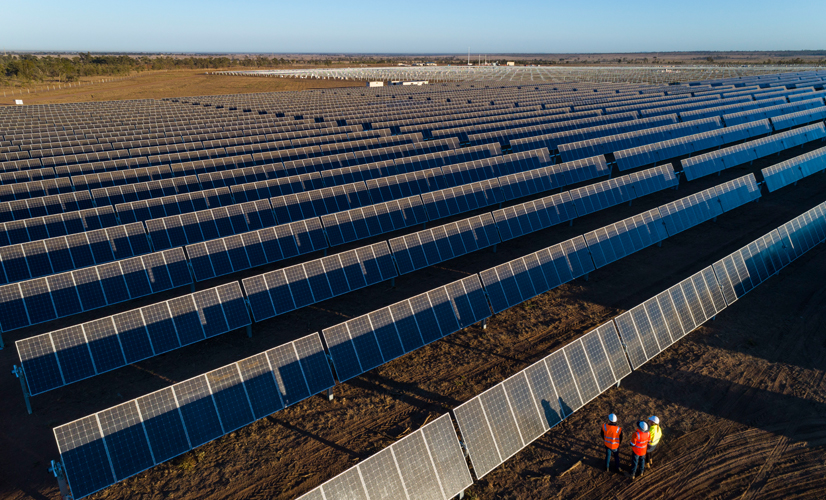Clean Energy Council (CEC) Chief Executive Kane Thornton has stressed in an open plea to Canberra that every dollar spent as part of Australia’s economic recovery will either help or hinder efforts to reduce emissions and transition the country to renewable sources of energy. This is to say, every dollar can be spent improvingly, or it can be spent impetuously. The Covid-19 economic recovery is a binary choice, says Thornton. It’s back the way we came, or onwards to a new horizon.
Thornton directed Canberra’s attention to its recently released report Clean Energy at Work, based on research conducted by the Institute for Sustainable Futures at the University of Technology Sydney (UTS). The study, the largest performed on the green sector current and future employment opportunity, found that jobs in the renewable energy sector are likely to almost double in the next five years, that is if the Australian Energy Market Operator’s (AEMO) Integrated System Plan is put into effect.
Currently, 25,000 people are employed in the renewable energy industry, and that figure is expected to rise to 44,000 by 2025. Moreover, over the next 15 years it is expected that 70% of all renewable energy job opportunities could be in rural or regional Australia, a boon to overpopulated metropoles and regional areas both.
In fact, and perhaps more importantly, in a great many cases new renewable jobs are a good match for existing coal jobs across a range of blue and white-collar occupations, including construction and project managers, engineers, electricians, site administrators and mechanical technicians.
The call comes on the back of think-tank Beyond Zero Emissions’ (BZE) publication of its Million Jobs Report, in which, recognising the opportunity in every crisis, provides a green scaffold for a Million Jobs Plan of Covid-19 economic recovery. BZE’s Million Jobs Plan is a green scaffold on which it believes Australia’s economy can rebuild and create 1.8 million new jobs through renewables and low emissions projects over the next five years.
The BZE Report has already been backed by a host of climate, development and investment leaders, including Atlassian billionaire Mike Cannon-Brookes, Ross Garnaut, Malcolm Turnbull, Kevin McCann and Christiana Figueres.
Figureres, one of the UN’s architects of the Paris Agreement, said she was extremely excited about BZE’s plan because it begins to answer a question that has been dogging her for years: “Why is Australia not the leader of renewable energy and renewable industry in the world?” Considering Australia is sitting on such resources, continued Figueres, with such a capable labour-force and on the doorstop of the world’s fastest-growing market, “there is no serious answer to that question.”
Figueres also made the perspicacious point that if the world’s economies are going to go into debt for the purposes of Covid-19 recovery packages, then “we have to understand that injection of capital is going to be injected now, but is going to be paid for by future generations. Hence, that capital has to be invested in the interest of future generations.”
Policy pressure
Despite being ready to take Australia through the Covid-19 crisis and into the future, there is still a lot of hard work required before the renewable energy industry can make our future a reality. Thankfully, most of this hard-work can be performed at the level of politicians’ internal will. The renewable energy industry needs favourable policy settings.
“Policies must be put in place now that create a stable investment environment to bring forward the enormous pipeline of wind and solar projects across Australia,” says Thornton. “If we fail to do this, the once-in-a-generation opportunity presented by COVID-19 to transition our electricity system to one based on clean energy won’t be the only thing that’s lost.”
It was one of the Clean Energy at Work report’s most dreadful findings, lamented Thornton, that if the federal policy vacuum continues, in what the AEMO has called its Central Scenario, the renewable energy industry could actually lose upwards of 11,000 jobs in the next three years.
This content is protected by copyright and may not be reused. If you want to cooperate with us and would like to reuse some of our content, please contact: editors@pv-magazine.com.









1 comment
By submitting this form you agree to pv magazine using your data for the purposes of publishing your comment.
Your personal data will only be disclosed or otherwise transmitted to third parties for the purposes of spam filtering or if this is necessary for technical maintenance of the website. Any other transfer to third parties will not take place unless this is justified on the basis of applicable data protection regulations or if pv magazine is legally obliged to do so.
You may revoke this consent at any time with effect for the future, in which case your personal data will be deleted immediately. Otherwise, your data will be deleted if pv magazine has processed your request or the purpose of data storage is fulfilled.
Further information on data privacy can be found in our Data Protection Policy.